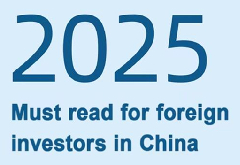NMPA Announcement on Further Strengthening the Supervision and Administration of Entrusted Manufacturing by Registrants of Medical Devices (No.38, 2024)
Pursuant to the implementation of the Regulations for the Supervision and Administration of Medical Devices, and with the objective of fully enforcing the primary responsibility for quality and safety on the part of the registrant of medical devices (hereinafter referred to as "Registrant"), this announcement aims to further strengthen the supervision and administration of entrusted manufacturing by registrants of medical devices, and enable effective prevention and control of quality and safety risks associated with medical devices. Relevant matters are hereby announced as follows:
I. Strictly Enforcing the Primary Responsibility for Registrant of Medical Devices
(I) The registrant shall fully assume the primary responsibility for the quality and safety of medical devices and establish an effective quality management system covering the entire life cycle of medical devices. If the registrant entrusts manufacturing to others, they shall establish and improve a management organization that is compatible with the characteristics of the products entrusted for manufacturing and the scale of the manufacturer, fully perform the responsibilities such as product risk management, change control, product release, after-sales service, product complaint handling, adverse event monitoring and product recall. Registrant shall regularly audit the operation of the contract manufacturer’s quality management system in accordance with the Good Manufacturing Practice for medical devices.
Even when a registrant solely relies on entrusted manufacturing, the registrant shall also maintain the quality management competency for the entire life cycle of the product, and maintain the integrity and effectiveness of the quality management system; establish a management organization that is compatible with the entrusted manufacturing, and at least clearly define the responsibilities of relevant departments such as technology, production, quality management, adverse event monitoring and after-sales service. The quality management department shall be independently established, staffed with a sufficient number of full-time qualified quality management personnel, as well as technicians who are familiar with the products and have relevant professional knowledge. They shall be able to carry out effective monitoring and control of the entrusted manufacturing activities.
The registrant shall be able to assume responsibility for the quality and safety of medical devices in accordance with the law. It is recommended to procure commercial insurance and adopt additional mechanisms to establish a liability compensation capacity that is commensurate with factors such as the product risk level, market scale and personal injury compensation standards.
(II) The registrant shall give preference to manufacturers with a higher level of quality management, a larger scale of production, a good credit record, and a higher level of production automation and informatization management as the entrusted party. Before carrying out the entrusted manufacturing, the registrant shall require the entrusted party to submit a statement of credit status and consult the public information of the regulatory authority to fully understand the credit status of the entrusted party.
(III) For implantable medical devices, self-manufacturing is encouraged. However, if entrusted manufacturing is necessary, the registrant shall, in principle, select and dispatch personnel with experience in manufacturing quality management in relevant fields and familiar with product manufacturing process and quality control requirements to be stationed at the contract manufacturer during the entrusted manufacturing activities, so as to provide on-site guidance and supervision for critical steps of manufacturing and quality management. These personnel shall ensure that manufacturing activities are conducted in accordance with laws, regulations, normative documents, mandatory standards, and registered product technical requirements. The job responsibilities of the assigned personnel shall be specified in the quality agreement. The product included in the Catalogue of Medical Device Prohibited from Entrusted Manufacturing shall not be entrusted for manufacturing.
(IV) If the registrants entrust manufacturing to others, they shall in accordance with the requirements of the Guidance for Preparation of Contract Manufacturing Quality Agreement of Medical Devices, sign a quality agreement with the contract manufacturer, taking into account their specific circumstances. In principle, the valid term of the quality agreement shall not exceed the valid term of the product registration certificate and the manufacturing license of the contract manufacturer. Subject to compliance with relevant regulatory requirements, the registrant may, in the quality agreement, negotiate with the contract manufacturer the specific implementation methods for document control, procurement control, process control, inspection control, product release, and change control, among others. However, the registrant must clearly define the communication and coordination requirements.
(V) The registrant shall, in collaboration with the contract manufacturer, convert the quality agreement requirements into executable management documents associated with entrusted manufacturing and supervise the contract manufacturer to ensure their effective implementation. The registrants are encouraged to adopt controlled information systems to optimize their management processes related to entrusted manufacturing and enhance the efficiency of quality management.
The registrant and the contract manufacturer shall review the appropriateness, adequacy and effectiveness of the quality agreement annually to confirm that the relevant requirements of the quality agreement are consistent with the entrusted manufacturing management documents and the actual manufacturing. If any inconsistency is found, rectification measures shall be taken promptly.
(VI) The registrant shall, in collaboration with the contract manufacturer, establish a management approach for purchased items and suppliers based on the level of risk posed by these items to the product. For key purchased items or major raw materials, such as raw materials of animal origin, outsourced sterilization process, key components/parts/assemblies of active products as well as antigens and antibodies of in vitro diagnostic reagents, which are purchased by the contract manufacturer, the registrant shall determine the procurement acceptance criteria and audit the relevant suppliers on its own or in collaboration with the contract manufacturer.
(VII) If the products entrusted for manufacturing and other products (including different varieties, specifications, models and etc.) share the same manufacturing premises or manufacturing equipment, the contract manufacturer shall establish a management system to prevent risks such as possible mixups of products or materials, cross-contamination and misuse of process parameters based on principles of product quality risk management, risk control measures, and overall risk-benefit balance. The registrant shall strengthen the supervision and guidance of the contract manufacturer to ensure that relevant risk control measures are in place.
(VIII) If the registrants entrust manufacturing to others, they shall establish the procedures for marketing release of products, specifying the release criteria and conditions, and reviewing the manufacturing process records, quality testing reports of the medical devices and manufacturing release document from the contract manufacturer, and if conforming to criteria and conditions, the medical products can enter the market only upon signature of the authorized release personnel. The marketing release of products shall be completed by the registrant by themselves, and shall not be entrusted to other manufacturers.
The contract manufacturer shall establish procedures for manufacturing release, specify the criteria and conditions for manufacturing release, review the manufacturing process of medical devices and inspect the products to ensure that only those conforming to the criteria and conditions could be released for manufacturing.
The retention period of records for marketing release of products and manufacturing release shall comply with the relevant requirements of the Good Manufacturing Practice for medical devices.
(IX) The registrant shall, in collaboration with the contract manufacturer, specify the corrective and preventive action communication mechanism, the responsibilities of both parties and disposal requirements in the quality agreement, and develop corrective and preventive control procedures appropriate to the risk of the product. In the event of trend-related, systemic, or sudden issues such as a significant decline in product quality conformance, consecutive batches of intermediate or finished products being non-conforming, or post-market risk management events exceeding the acceptance criteria, the registrant shall, in collaboration with the contract manufacturer, conduct a joint investigation and analysis of the issues, develop and review corrective and preventive action plans, implement the necessary measures, and evaluate the effectiveness of these measures.
(X) The registrant shall, in collaboration with the contract manufacturer, enhance its change control capabilities and establish a robust change control procedure that includes change assessment, verification, and validation. For the introduction or change of entrusted research and development, outsourced manufacturing process, and service suppliers, the change control shall be implemented through a risk assessment to determine whether the relevant changes will impact the effectiveness of the quality management system.
(XI) The registrant of entrusted manufacturing shall, in accordance with the Provisions for Medical Device Adverse Event Monitoring and Re-evaluation and other relevant regulations, take into account the risk characteristics of the product, and allocate sufficient resources, improve the mechanism, and strengthen the ability to assume the responsibility of medical device adverse event monitoring. Specifically, the registrant shall establish a sound system, allocate sufficient personnel, collect and report information, investigate and handle events, and conduct risk research and evaluation. The registrant shall also stipulate in the quality agreement the responsibilities and obligations of both parties in the investigation and handling of adverse events. The registrant stipulated in the Regulations for the Supervision and Administration of Medical Devices and other regulations shall fulfill the responsibility of adverse event monitoring, and shall not transfer it to the contract manufacturer through the quality agreement.
II. Strengthening the Registration Administration of Medical Device Entrusted Manufacturing
(XII) If the registrants (applicants) entrust manufacturing to others, they shall clearly include the entrusted manufacturing processes of the contract manufacturer within the scope of their quality management system in the documents on quality management system. Additionally, the registrant shall include the procedures and relevant documentation for measuring, analyzing, and improving performed by the entrusting party to the entrusted party in the “Documents on Quality Management System - Measurement, Analysis and Improvement Procedure of Quality Management System” submitted as part of the registration application.
When conducting the verification of quality management system for registration, the focus shall be on the establishment of the manufacturer's quality management organization, the staffing and job performance of key personnel in the quality system, the signing of quality agreements, and the management of entrusted research and development and entrusted manufacturing. If cross-region entrusted manufacturing within China is involved, the verification of quality management system for registration shall, in principle, be performed by the drug regulatory authority at the registrant's (applicant's) location, either independently or in conjunction with the drug regulatory authority at the contract manufacturer's location, to conduct a comprehensive inspection of the quality management system of both the registrant (applicant) and the contract manufacturer. In exceptional circumstances where the drug regulatory authority at the registrant's (applicant's) location is genuinely unable to dispatch inspection personnel, they may delegate the drug regulatory authority at the contract manufacturer's location to conduct the verification of the contract manufacturer. In such cases, the drug regulatory authority at the registrant's (applicant's) location shall review and confirm the verification report of the contract manufacturer in conjunction with the system inspection of the registrant (applicant).
(XIII) For registration application or registration renewal application involving domestic entrusted manufacturing, the registration department shall record the address of the contract manufacturer in the Manufacturing Address column of the medical device registration certificate, with the notation “(Contracted Manufacturing)”. Additionally, the department shall note the name and unified social credit identifier of the contract manufacturer in the Remarks column, in the format “Contract manufacturer: XXXX Company; Unified social credit identifier: XXXX”. If the change registration involves a change in the entrusted manufacturing, the registrant shall also indicate the relevant information about the entrusted manufacturing in the change registration documents in the manner described above, and update the changed information in the corresponding fields of the registration certificate, including the manufacturing address and remarks. The registrant shall also submit the changed information in accordance with the data collection requirements of the National Drug Regulatory Data Sharing Platform. The registrant and the provincial drug regulatory department at the contract manufacturer's location shall promptly record the information about the entrusted manufacturing in the credit files of contract manufacturer.
If only the name of the contract manufacturer has changed in a textual manner, no application for change filing is required. In such cases, the modified registration certificate shall be issued at the time of registration renewal.
Each provincial drug regulatory department shall organize a review of the entrusted manufacturing registration certificates that have been issued within their administrative areas. If any certificate is found to not have the required information marked, the department shall instruct the registrant to apply for the marking to be added to the former registration department, and complete the marking within 3 months from the date of implementation of this announcement.
(XIV) When a domestic medical device manufacturer changes its manufacturing address and the contract manufacturer's manufacturing scope can cover the variety of the manufactured products, without involving a change in the manufacturing license, the registrant shall submit a statement issued by the drug regulatory authority at the contract manufacturer's location when applying for change filing of registration certificate.
If the registrants cease to entrust manufacturing to others, they shall promptly notify the former registration department to cancel the address of contract manufacturer; the contract manufacturer shall also promptly report the relevant situation to the provincial drug regulatory authority at its location.
III. Continuously Strengthening Supervision and Administration of Entrusted Manufacturing
(XV) The provincial drug regulatory departments shall fulfill their territorial supervision responsibilities, and through various means and channels, such as collecting entrusted manufacturing registration certificate information, urging enterprises to report on their products, and receiving cross-regional product reports, comprehensively sorting out and grasping the number of registrants and contract manufacturers of all types within their administrative areas. Based on the principle of risk management, they shall strengthen supervision in a targeted manner.
The provincial drug regulatory department where the registrant is located shall pay continuous attention to the registrant's ability to quality management over the whole life cycle of medical devices, the ability to assess and control the contract manufacturer, the ability to manage changes, and verify the information provided by the registrant in conjunction with the inspection of the contract manufacturer. The provincial drug regulatory department where the contract manufacturer is located shall pay continuous attention to the production and quality management of products entrusted for manufacturing, supervise the contract manufacturer to carry out manufacturing activities in accordance with the laws, regulations, normative documents, mandatory standards, registered product technical requirements and entrusted manufacturing quality agreement.
(XVI) If the registrants change from self-manufacturing to entrusted manufacturing, or change the contract manufacturer, they shall promptly report to the provincial drug regulatory authority at their location. The provincial drug regulatory authority where the registrant is located shall carry out a comprehensive inspection of the quality management system of the registrant and the contract manufacturer, and the inspection of the contract manufacturer can be carried out in conjunction with the provincial drug regulatory department where the contract manufacturer is located.
(XVII) Drug regulatory departments at all levels shall be deeply aware of the complexity and uniqueness of the supervision of entrusted manufacturing by the registrant, scientifically allocate regulatory resources, and enrich regulatory measures.
In regions where the registrants of entrusted manufacturing are concentrated, the provincial drug regulatory authority shall, in light of the supervision and inspection work, hold regular special meetings to discuss the supervision of entrusted manufacturing by registrant, analyze the results of supervision and inspection as well as product sampling, comprehensively identify potential safety concerns in the quality management system and product quality, and take targeted preventive measures to eliminate systemic and regional risks.
The drug regulatory authorities are encouraged to explore the use of simultaneous on-site inspections at both the registrant's and contract manufacturer's premises, utilizing information technology such as remote connections to facilitate real-time communication of inspection information and standardize the inspection criteria.
(XVIII) The National Medical Products Administration (NMPA) will continue to promote the construction of medical device variety files and credit files, and through the standardization of entrusted manufacturing information notation in the registration certificate, promote the interconnection of relevant information on entrusted manufacturing by registrant. The provincial drug regulatory authorities shall achieve the information interconnection of the whole chain of medical device supervision within their administrative areas, collecting and integrating information on review and approval, verification of quality management system for registration, manufacturing licensing, supervision and inspection, manufacturer reporting, supervisory sampling inspection, and investigation and handling of illegal acts, and continuously updating and improving the credit files of registrants and contract manufacturers. They shall also push this information to the National Drug Regulatory Data Sharing Platform as required by the NMPA, gradually achieving cross-provincial information interconnection.
If the cross-region entrusted manufacturing is involved, the provincial drug regulatory departments where the registrant and contract manufacturer are located shall, in accordance with the requirements of the Provisions for Supervision and Administration of Medical Device Manufacturing and the Opinions on Strengthening Collaborative Supervision of Cross-region Entrusted Manufacturing of Medical Devices, promptly share regulatory information on the variety of the manufactured products, inspection results, and responsibility interviews.
(XIX) If, during supervision and inspection, it is found that the quality management system of the registrant or contract manufacturer is not operating effectively, the provincial drug regulatory department shall order a rectification within a stipulated period. If the registrant or contract manufacturer fails to take effective measures to eliminate existing quality and safety risks, the provincial drug regulatory department shall take prompt action, including warnings and responsibility interviews. If necessary, the provincial drug regulatory departments where the registrant and contract manufacturer are located may conduct joint responsibility interviews.
If the registrant or contract manufacturer seriously violates the Good Manufacturing Practice for medical devices, and after comprehensive evaluation, it is determined that the violation may affect product safety and efficacy, and might cause potential harm to human health, the provincial drug regulatory department may take emergency control measures to suspend their manufacturing, distribution and use, and shall strictly impose penalties in accordance with Article 86 of the Regulations for the Supervision and Administration of Medical Devices.
(XX) This announcement shall come into force on June 1, 2024.
National Medical Products Administration
April 02, 2024



